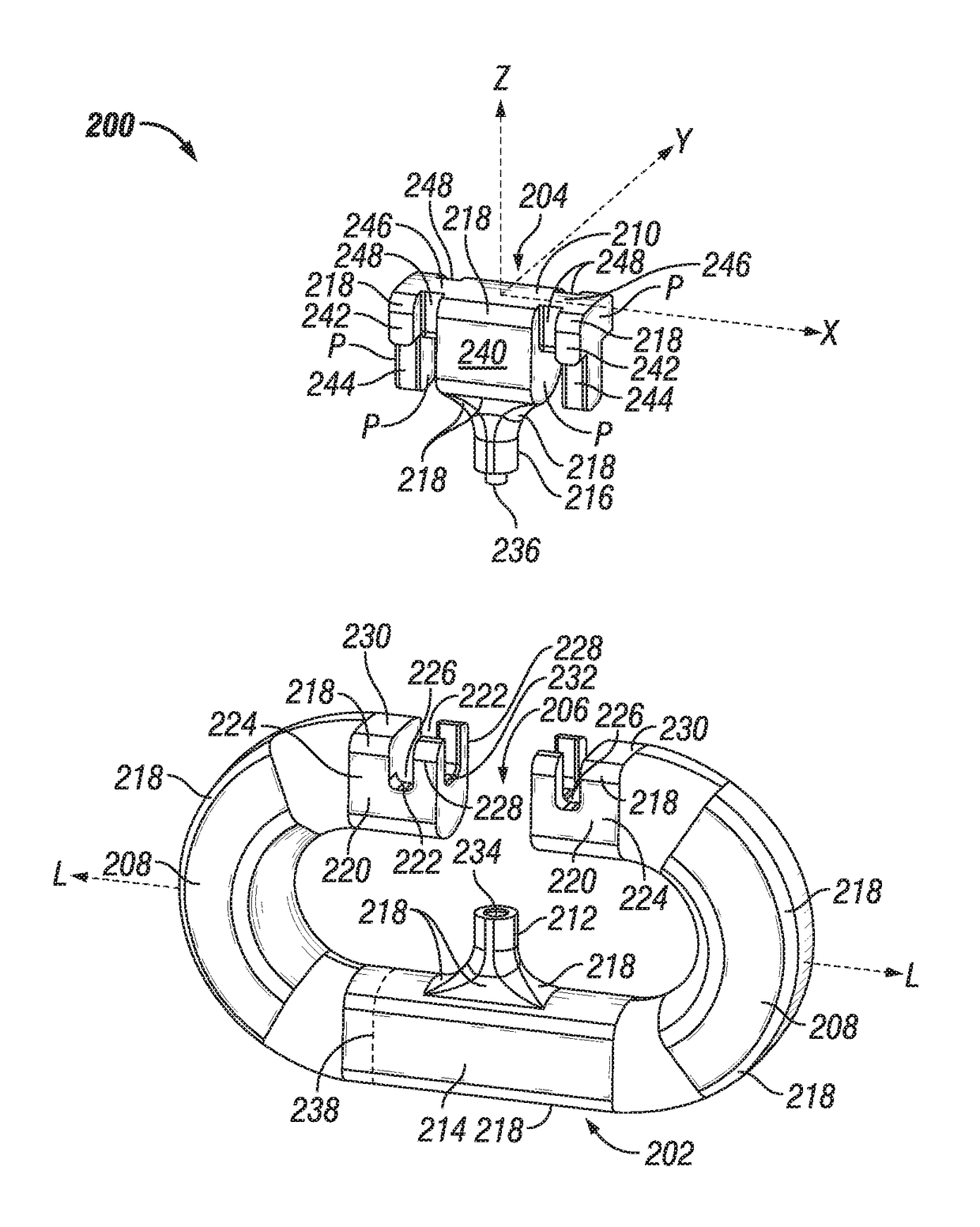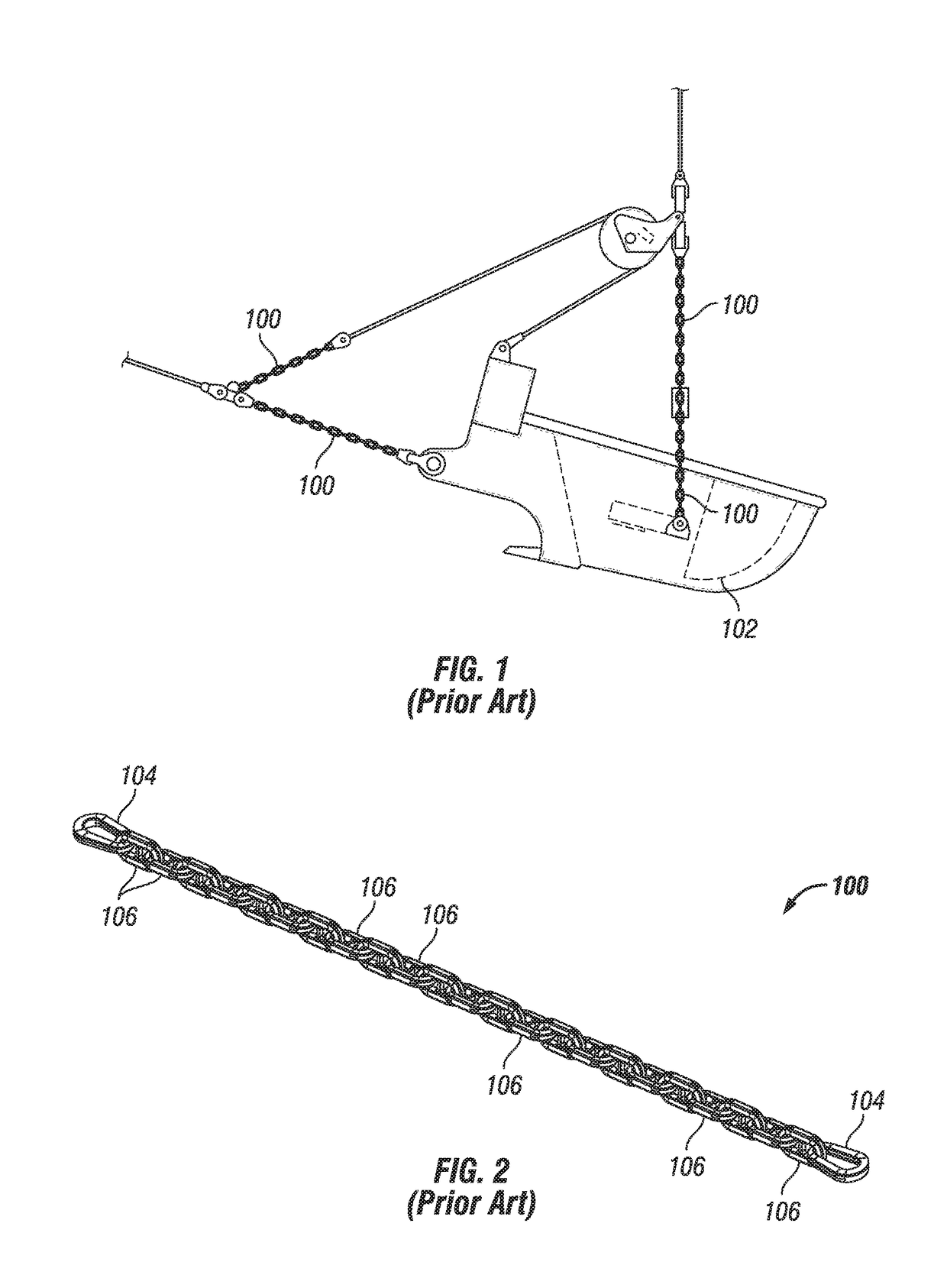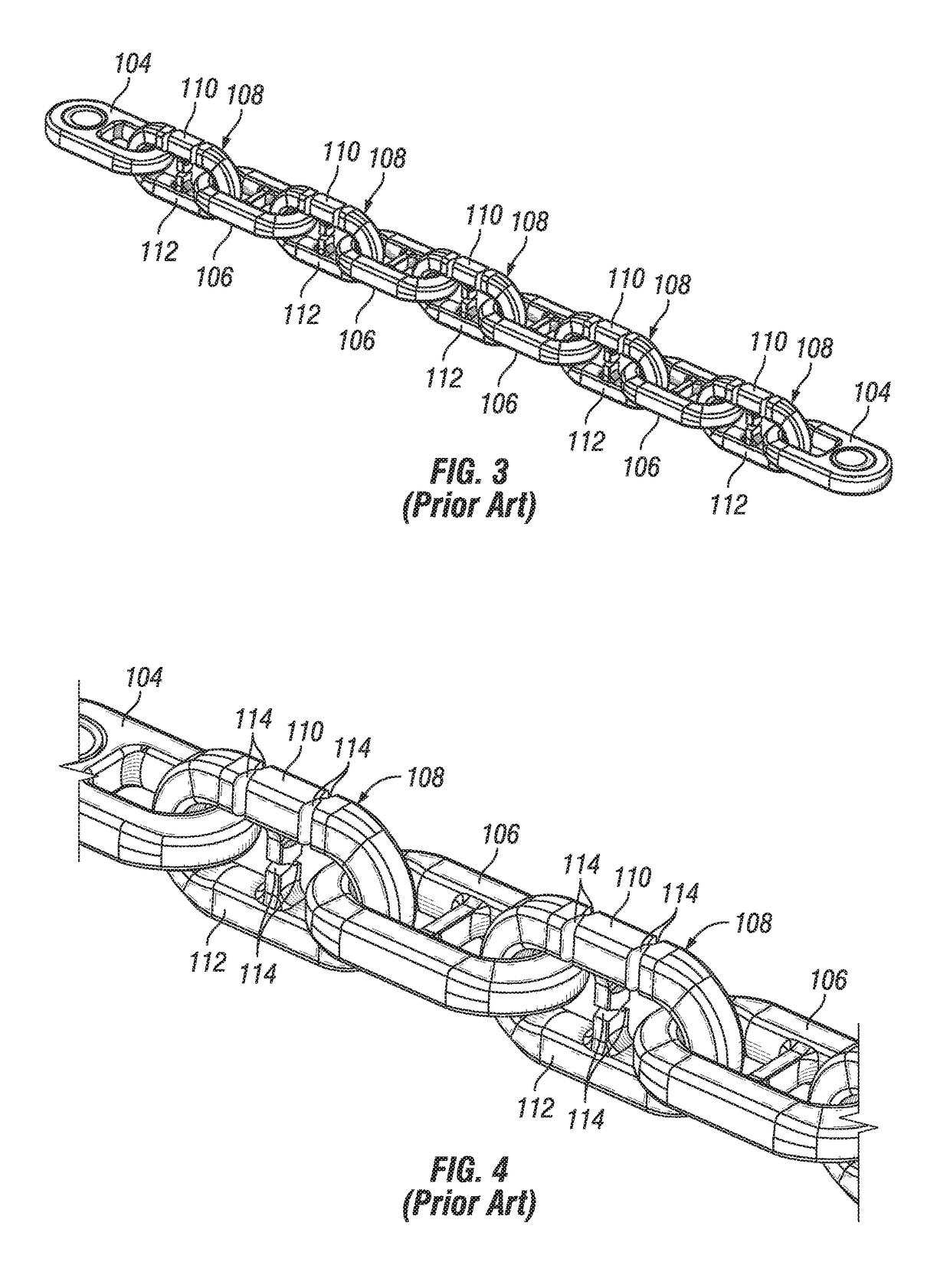Chain link using a pressed-in member
a technology of chain link and pressed member, which is applied in the direction of hoisting chains, metal chains, and carrying chains, etc., can solve the problems of occupying valuable space, occupying a large amount of time, and the length of the apparatus used in heat treating the chain may be undetectedly long and expensive to constru
- Summary
- Abstract
- Description
- Claims
- Application Information
AI Technical Summary
Benefits of technology
Problems solved by technology
Method used
Image
Examples
Embodiment Construction
[0017]The solution is to have a two piece link joins whole body links together. The joining process involves a “tee” section that is press fit (every other link) to make a chain assembly. This allows the ability to cast individual components, heat treat to the desired specification then assemble the chains. This also will eliminate the welding aspect to assemble the chain links together, thus saving time and assembly cost. The press fit allows for load transfer within the individual link assembly, eliminates welding, and eliminates the need to cast the chain as a single assembly. It also allows for final heat treating to be conducted prior to chain assembly. The chain may then be painted and placed into distribution.
[0018]Focusing now on FIGS. 5 and 6, a chain link subassembly 200 according to an embodiment of the present disclosure is shown. The chain link subassembly 200 includes a main link member 202 and a press-in member 204 or connecting member that is intended to be attached ...
PUM
 Login to View More
Login to View More Abstract
Description
Claims
Application Information
 Login to View More
Login to View More - R&D
- Intellectual Property
- Life Sciences
- Materials
- Tech Scout
- Unparalleled Data Quality
- Higher Quality Content
- 60% Fewer Hallucinations
Browse by: Latest US Patents, China's latest patents, Technical Efficacy Thesaurus, Application Domain, Technology Topic, Popular Technical Reports.
© 2025 PatSnap. All rights reserved.Legal|Privacy policy|Modern Slavery Act Transparency Statement|Sitemap|About US| Contact US: help@patsnap.com



